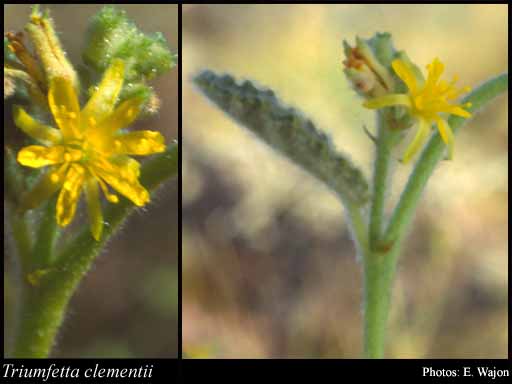- Reference
- Nuytsia 9:417 (1994)
- Conservation Code
- Not threatened
- Naturalised Status
- Native to Western Australia
- Name Status
- Current
Erect, spreading shrub, 0.15-0.6(-2) m high. Fl. yellow, Mar to May or Jul to Oct. Stony clay or loam, sandy loam, coarse shelly sand. Rocky hillsides, colluvial flats, creek & river beds.







Scientific Description
Shrub, with hairy stems. Leaves 15-95 mm long, 8-35 mm wide, not lobed; margins crenate; hairy, with Simple hairs (without tubercle bases), with stellate hairswith scales absent, Sessile glands absent; stipules present but early deciduous (only visible on youngest leaves), 9-14 mm long. Perianth clearly of two whorls (calyx and corolla), the corolla obvious and prominent. Pedicel present, 2-2.7 mm long; indumentum present, with simple hairs, with stellate hairs present, with scales absent. Epicalyx (extra segments or 'bracteoles' immediately below the calyx) absent. Calyx 3.6-4.8 mm long, the lobes fused less than half their length, Sessile glands absent, simple hairs (without tubercle bases) present, stellate hairs present, tubercle-based simple hairs absent, gland-tipped hairs absent, scales absent, Terminal appendages present, number of ribs absent. Corolla yellow, 3-4.5 mm long, glabrous. Indumentum (outside) Sessile glands absent. Stamens many, free and inserted at the base of the ovary; filaments present, 2.2-3 mm long; anthers 0.5-0.6 mm long, indumentum absent (anthers glabrous). Staminodes absent, appendages absent. Ovary hairs or scales present, simple hairs present, stellate hairs absent, gland-tipped hairs absent; style 1, with a lobed or capitate stigma, 3-3.2 mm long, with one style branches or lobes, mostly glabrous, wing absent. Fruits indehiscent and not splitting into sections (drupes), length-width ratio more or less as long as wide, hairs or scales present, simple hairs (without tubercle bases) absent, stellate hairs present, Sessile glands absent, tubercle-based simple hairs absent, gland-tipped hairs absent, scales absent; apex rounded; prickles present, abundantly covering the fruit; terminal awns or spines absent; calyx persistent to mature fruit, not accrescent. Flowering time March, April, May, July, August, September or October. Distribution Botanical Province Eremaean, IBRA Bioregion Great Sandy Desert, Pilbara, Carnarvon and Gascoyne.
Distribution
- IBRA Regions
- Carnarvon, Gascoyne, Great Sandy Desert, Pilbara.
- IBRA Subregions
- Ashburton, Cape Range, Chichester, Hamersley, McLarty, Roebourne.
- Local Government Areas (LGAs)
- Ashburton, East Pilbara, Exmouth, Karratha, Port Hedland.